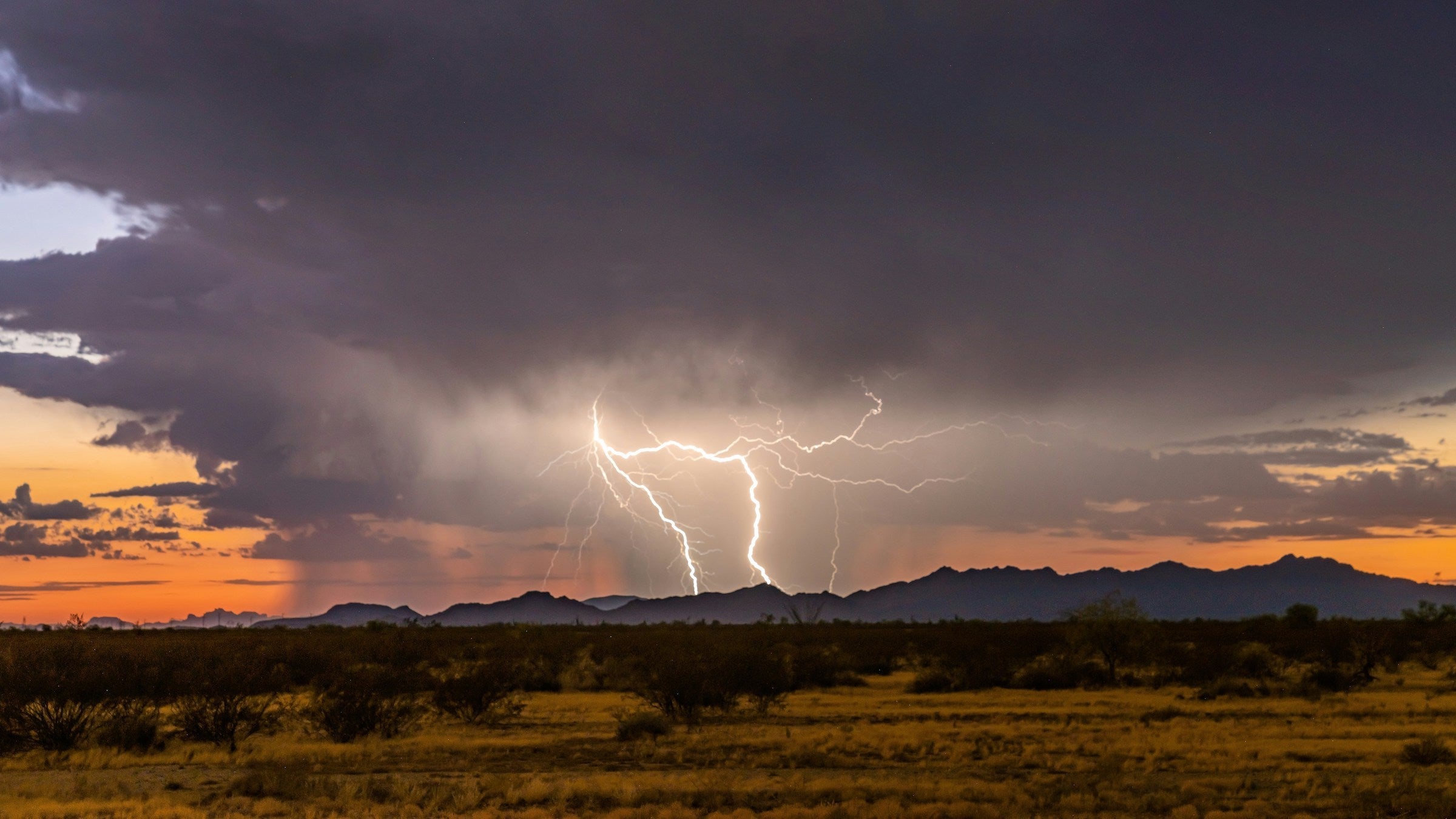The sky flashed white, and in a single instant, the whole herd dropped dead. So did their caretaker. Mike Morgan, a longtime Colorado rancher, was feeding his cattle at the time of the strike on Saturday, May 25, and did not survive. While these kinds of lightning-induced mass-casualty incidents are fairly common, the tragedy was the first of its kind in Colorado.
Morgan was standing in the back of a trailer, and the cattle had bunched around him to feed. The close proximity of the animals likely made them particularly vulnerable. Morgan’s wife was leading horses to the trailer at the time, while her father was driving the trailer’s tractor. Both individuals remained uninjured.
George Crocket, a local coroner, that it was the worst lightning strike he’d ever seen in the area. “I’ve seen horses get killed, but it’s usually one at a time,” he said.
How Can a Single Bolt Take So Many Lives?
This isn’t the first time a lightning strike has instantaneously dropped an entire herd. In fact, lightning accounts for about 80 percent of accidental livestock deaths, according to USDA data.
“It is not unusual to have a large group of animals felled by lightning,” Steven Clark, the president of the Lightning Data Center at Lakewood’s St. Anthony Hospital, said in a . “More often than not, it will be a ground current. In other words, the lightning will hit an object on earth, and the current will flow through the ground and kill the animals.”
Ground currents happen when lightning strikes the landscape and then continues to travel along the surface of the earth. Since human and animal bodies conduct electricity better than soil does, lightning tends to travel through their bodies instead of the ground whenever possible.
Farm animals like cows are among the likely to be affected. For one thing, they’re four-legged. That orientation means a current can travel through the ground, up the creature’s forelegs, and down its rear legs. Along the way, the electrical current must pass through the animal’s heart.
Cows also tend to huddle together, which increases the chances that a bolt of lightning flowing through ground will be able to before the electrical charge has time to disperse and weaken.
Lightning-induced livestock deaths aren’t always reported. But reports that do come in usually include 10 to 30 animals. Sometimes, cases are even more extreme. In 2016, a herd of more than likely lost their lives to lightning in Norway. Since lightning generally strikes the earth as opposed to a specific target, ground current was the likely cause.
What’s the Takeaway for Hikers?
Agricultural workers—including ranchers, migrant workers, and fieldworkers—are more vulnerable to lightning than almost any other population on the planet. This is especially true in areas of the world where there’s little to no shelter from storms. While the Colorado incident is a sobering reminder of the dangers farm workers face, it also bears some important takeaways for outdoor recreationists.
Hikers are often told they’re safe from lightning as long as they’re not standing on a ridgeline. That’s one of many . This strike took place on flat ground—a reminder that nowhere outdoors is entirely risk-free during a storm. The strike also happened on a summer afternoon—a time notorious for thunderstorms in the Rockies. This critical 12:00 pm to 4:00 pm window is when of injurious lightning strikes happen in Colorado.
The other takeaway is the danger of ground strikes as opposed to direct strikes. In this case, the bolt probably didn’t come down on Morgan’s head. Instead, a ground current was the likely culprit of the deaths. Ground currents are hard to predict or control, and yet they’re responsible for of lightning deaths and injuries. So, just because you’re not standing next to a tall object, doesn’t mean you’re safe.
Lightning strikes only kill about 10 percent of the people they hit. Still, often comes with its own challenges. So, if you hear or see a storm coming, do your best to get out of the open and under tree cover as soon as possible. And remember, the only way to guarantee safety is by taking cover in a hard-sided building or a vehicle.


